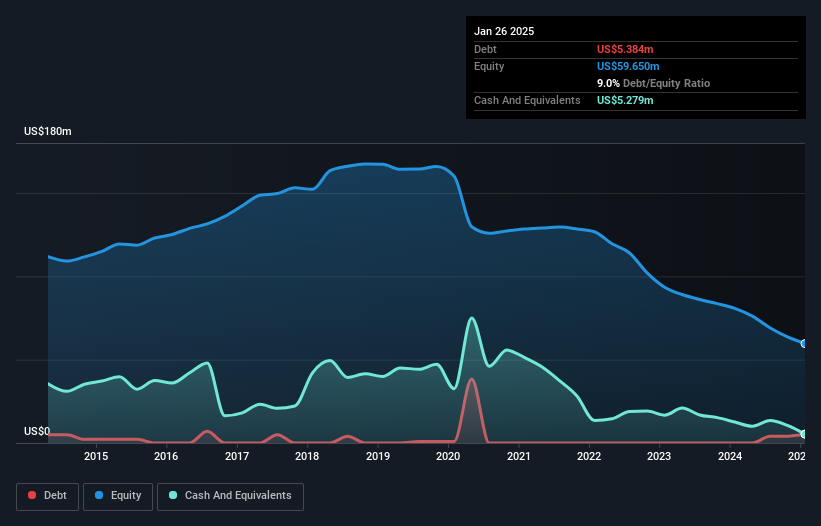
Warren Buffett famously said, 'Volatility is far from synonymous with risk.' So it might be obvious that you need to consider debt, when you think about how risky any given stock is, because too much debt can sink a company. We note that Culp, Inc. (NYSE:CULP) does have debt on its balance sheet. But should shareholders be worried about its use of debt?
What Risk Does Debt Bring?
Debt is a tool to help businesses grow, but if a business is incapable of paying off its lenders, then it exists at their mercy. Ultimately, if the company can't fulfill its legal obligations to repay debt, shareholders could walk away with nothing. However, a more frequent (but still costly) occurrence is where a company must issue shares at bargain-basement prices, permanently diluting shareholders, just to shore up its balance sheet. Of course, debt can be an important tool in businesses, particularly capital heavy businesses. When we think about a company's use of debt, we first look at cash and debt together.
What Is Culp's Net Debt?
The image below, which you can click on for greater detail, shows that at January 2025 Culp had debt of US$5.38m, up from none in one year. On the flip side, it has US$5.28m in cash leading to net debt of about US$105.0k.

A Look At Culp's Liabilities
According to the last reported balance sheet, Culp had liabilities of US$50.6m due within 12 months, and liabilities of US$17.3m due beyond 12 months. Offsetting these obligations, it had cash of US$5.28m as well as receivables valued at US$24.8m due within 12 months. So its liabilities outweigh the sum of its cash and (near-term) receivables by US$37.8m.
This is a mountain of leverage relative to its market capitalization of US$51.5m. This suggests shareholders would be heavily diluted if the company needed to shore up its balance sheet in a hurry. Carrying virtually no net debt, Culp has a very light debt load indeed. There's no doubt that we learn most about debt from the balance sheet. But it is future earnings, more than anything, that will determine Culp's ability to maintain a healthy balance sheet going forward. So if you want to see what the professionals think, you might find this free report on analyst profit forecasts to be interesting.
Check out our latest analysis for Culp
In the last year Culp had a loss before interest and tax, and actually shrunk its revenue by 9.7%, to US$214m. We would much prefer see growth.
Caveat Emptor
Importantly, Culp had an earnings before interest and tax (EBIT) loss over the last year. Indeed, it lost a very considerable US$14m at the EBIT level. Considering that alongside the liabilities mentioned above does not give us much confidence that company should be using so much debt. So we think its balance sheet is a little strained, though not beyond repair. However, it doesn't help that it burned through US$15m of cash over the last year. So in short it's a really risky stock. The balance sheet is clearly the area to focus on when you are analysing debt. However, not all investment risk resides within the balance sheet - far from it. Be aware that Culp is showing 1 warning sign in our investment analysis , you should know about...
Of course, if you're the type of investor who prefers buying stocks without the burden of debt, then don't hesitate to discover our exclusive list of net cash growth stocks, today.
Have feedback on this article? Concerned about the content? Get in touch with us directly. Alternatively, email editorial-team (at) simplywallst.com.
This article by Simply Wall St is general in nature. We provide commentary based on historical data and analyst forecasts only using an unbiased methodology and our articles are not intended to be financial advice. It does not constitute a recommendation to buy or sell any stock, and does not take account of your objectives, or your financial situation. We aim to bring you long-term focused analysis driven by fundamental data. Note that our analysis may not factor in the latest price-sensitive company announcements or qualitative material. Simply Wall St has no position in any stocks mentioned.